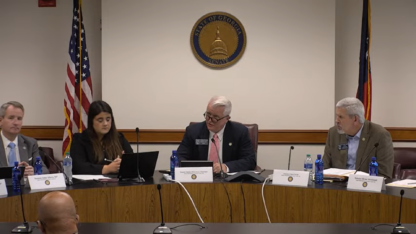Gwinnett To Be Paid For Chemical Found In County Wastewater

Brenna Beech / WABE
Gwinnett County will unveil technology Wednesday that extracts phosphorus from wastewater so it can be converted into fertilizer ─ and revenue ─ in what officials say is the first system of its kind in Georgia.
The Canadian company Ostara is behind the new system at the F. Wayne Hill Water Resources Center. It will cost the county about $14 million but could pay for itself in 15 years.
Gwinnett County will make approximately $200,000 a year by selling the phosphorous to the company that built the machine to extract it, said Tyler Richards, the assistant director of the county’s Department of Water Resources.
“It really wasn’t doing anybody any good,” Richards said. “So we would keep removing it over and over again, and it would recycle and cause us all kinds of headache trying to remove it.”
Phosphorous in wastewater can damage pipes at treatment plans, and it costs hundreds of thousands to send to the landfill, Richards said. The new system solves two problems.
“Not only does it prevent the issues we were having with the plating out in the pipes, or sending it to the landfill and paying to dispose of it,” she said, “we’re now getting a product that we can sell.”
Gwinnett is allowed to return very little phosphorous into the drinking water supply, due to regulations by the Lake Lanier Association. Algae thrives on the chemical, and too much of the plant can throw ecosystems off balance.
However, the chemical is an important, but run-off resistant, fertilizer that helps plants capture energy from the sun and convert it into compounds needed for growth.
In a statement, the City of Atlanta Department of Watershed Management said it’s “currently exploring the possibility of phosphorus recovery” at the R.M. Clayton Water Reclamation Center.








